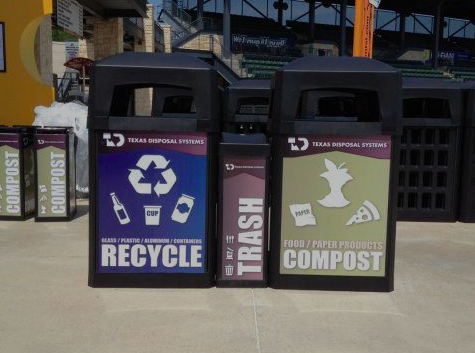Sponsored Post – from Texas Disposal Systems
In the 1950s and 60s, America’s natural resources were in dire need of protection, restoration and management. Some parts of the United States experienced extreme air pollution episodes found in many Chinese cities. Initiatives such as recycling and composting were hardly commonplace, and terms like “zero waste” and “circular economy” weren’t yet on the nation’s radar.
But on April 22, 1970, the first-ever Earth Day took place, as 20 million people participated in educational and community events that promoted global environmental concerns. In Austin, a city that is often recognized for being environmentally conscious, a new commitment to act took hold when University of Texas students organized a “three-day environmental teach-in” to celebrate the city’s first Earth Day.
This year will mark the 46th year of Earth Day celebrations. Events will be held across the city and we’ll once again be reminded about the importance of environmental conservation. However, we shouldn’t think of Earth Day as one single day to take action and reduce our environmental footprint – it should be considered a year-round effort.
We can’t solve the entire problem because there is substantial work to be done on our energy and transportation systems, but we can make an immediate impact by continually looking for ways to divert a material otherwise intended for landfill disposal and repurposing it for new life.
Today, Americans produce, on average, approximately 4.4 pounds of waste per day, per person, according to the EPA, even though 90 percent of our discarded materials can be recycled or composted. The City of Austin has set a goal of zero waste by 2040, which means keeping at least 90 percent of discarded materials out of the landfill. That may seem like a daunting goal. However, consider that San Francisco, a city with just over 800,000 residents, has reached an 80 percent diversion rate.
Small changes to our daily habits can have a significant impact on our environment. For example, contamination in recycling reduces the efficiency of recycling and wastes otherwise usable materials. Austinites can limit contamination by practicing recycling efficiency and developing good recycling habits, such as knowing what can and can’t be recycled.
Another way to keep waste out of the landfill is composting food scraps along with leaves and grass in your own backyard or community garden. Composting creates organic material that, when mixed with your soil, makes it more fertile so plants grow faster.
The responsibility shouldn’t fall on consumers alone. Businesses must do their part as well even when it’s not beneficial to their bottom line. For example, the construction industry is thriving in Austin but all the leftovers from those projects make up as much as a third of the waste going into area landfills. Builders can take advantage of programs offered that help them organize and manage their job sites to divert waste to beneficial uses.
This Earth Day and every day, we encourage others to join together and work toward real progress in achieving meaningful change in our community. Promote environmental awareness by educating others in your household, apartment building or neighborhood on proper recycling techniques. Start a compost pile at home. Take action and get involved in environmental issues important to you.
As demonstrated by the first Earth Day, with enough people working toward the same goal, we can chart a new path to sustain natural resources and our environment for future generations. We should all feel empowered to be good stewards of our environment while we still have time to make a difference.
Texas Disposal Systems is a leading resource management company that helps customers manage and divert waste to beneficial uses.




